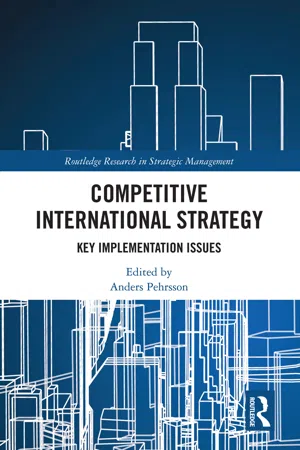Developments of technology is a major force that creates opportunities both for firms already established in a market and market entrants. Resulting from firms’ exploitation of the opportunities, patterns of competition and landscapes change. Digitalized production and design constitutes an example of how an individual firm can make its resource base more efficient. Thus, simultaneous use of the Internet and related technologies is a way of utilizing a firm’s resources, in terms of physical assets and knowledge, in more cost-efficient ways. In turn, this opens up for further strategy alternatives because prices may be lower. Furthermore, application of the Internet facilitates efforts of established firms and newcomers to implement competitive international strategies by getting smooth access to target customers and finding ways of balancing the offering of online and offline services.
The two examples show how development of information technology to a high degree makes earlier business models obsolete. Previous business models primarily relied on physical activities, but they are surpassed largely by models that also incorporate virtual activities (Büyüközkan and Göçer, 2018). As a result, well-known grounds for competition change character and new landscapes emerge.
Industry 4.0
The introduction of steam engines started the first industrial revolution in the 19th century and implied a significant increase in productivity. Production lines, conveyor belts, and division of labor then characterized the second revolution and facilitated standardization of products. Industrial evolution took the third step when digital programming entered the scene, facilitating automation of discrete systems.
Contemporary technology makes it easier for a manufacturing firm to handle customers’ demand for updated and customized products and services, and their need for quick deliveries. At the same time, technology drives development of customers’ demand patterns and competition among firms. The contemporary technology of Industry 4.0 (Erro-Garcés, 2019) refers to the fourth industrial revolution, including the “smart factory” concept, and means new relationships between a firm’s personnel, technology components, and systems. For example, application of the technology implies that well-known production planning is replaced by decentralized manufacturing with multiple manufacturing locations, and from large scale to micro scale (Srai et al., 2016). Thus, Industry 4.0 embraces “intelligent” production processes used to make a firm’s resources more efficient and increase productivity.
Components of Industry 4.0 include connections between virtual and physical realities and include the “Internet of Things” (connection of various products and systems over the Internet), the Internet of Services (connection of various services over the Internet), and the so-called smart factory (Greengard, 2015). Developments of Industry 4.0 are frequently supported by governments. For example, the governments of China, Germany, and the United States support refinements of the technology in comprehensive ways (Kagermann et al., 2013; Keqiang, 2016).
Erro-Garcés (2019) reviews research on Industry 4.0 and identifies needs for further studies. These are some major topics that need further attention: (1) the need for a common terminology for this quickly growing field, (2) specification of stages and levels for implementation of Industry 4.0, (3) developments of aspects, such as lean production and sustainability, (4) need to develop skills of the staff, and (5) impact on ways to organize the firm. Findings of further studies would help the individual firm to effectively align Industry 4.0 with its competitive international strategy and facilitate implementation of the technology in order to increase productivity and reduce costs.
Digitalization also becomes more important to supply chains and, therefore, firms need to develop digital capabilities in cooperation with other firms. Queiroz et al. (2019) note that there is just limited literature on the topic and much work remains in order to develop relevant frameworks and models. Queiroz et al. contribute by proposing a framework for development of digital supply chain capabilities that integrate elements of Industry 4.0. The framework consists of capabilities necessary to improve supply chain performance (development of a firm’s policies, integration of customers and suppliers, warehousing, transportation, and smart production), and technologies enabling refining of the capabilities (big data analytics, transaction techniques, artificial intelligence, cloud computing, systems to connect virtual and physical activities, and the Internet of Things).
Online and Offline Services
The issue of balancing online and offline channels for a firm’s international sales and other services is driven largely by technology developments that change the character of competition. A firm that is able to find an optimum mix of channels not just builds an efficient resource base for its competitive international strategy, but also creates additional ways to implement the strategy. When searching for the optimum mix, the firm may assess several combinations of informational websites, websites for e-commerce, and offline channels (e.g., Pauwels et al., 2011; Bang et al., 2013; Zhang et al., 2019). However, no matter the numb...
